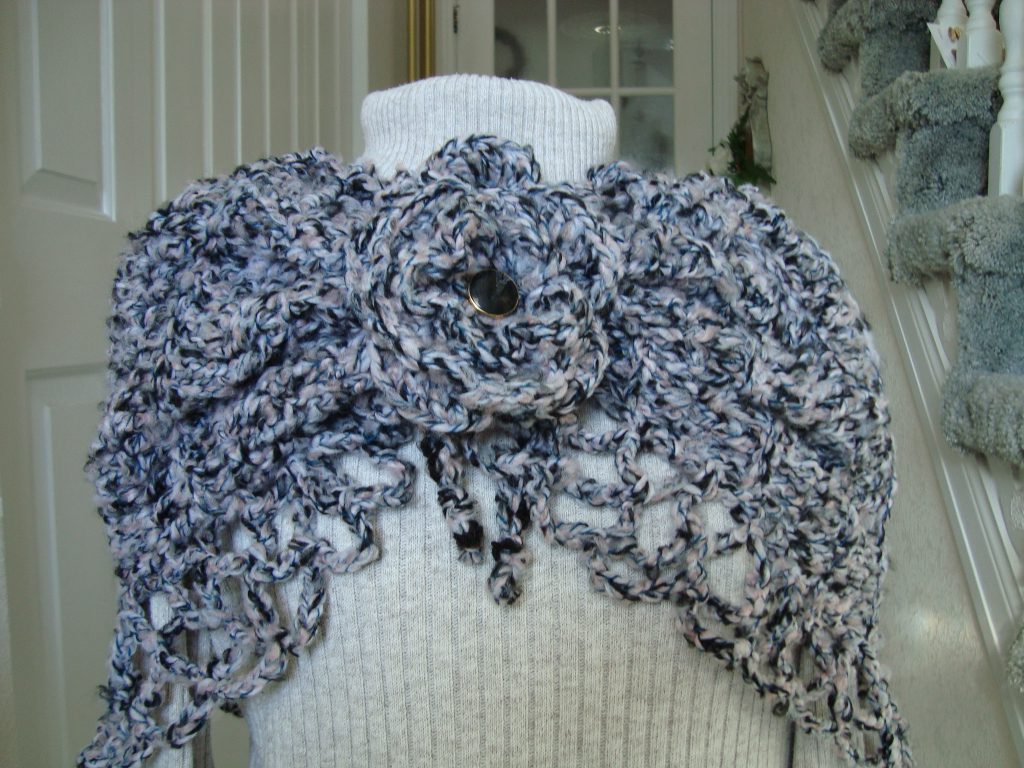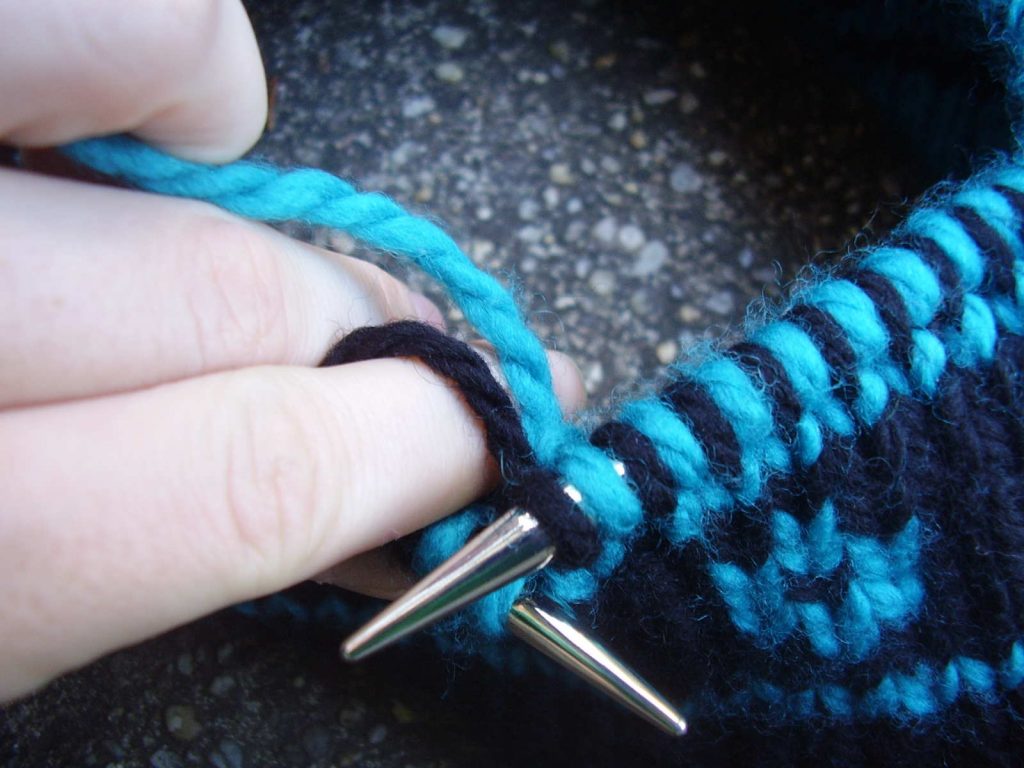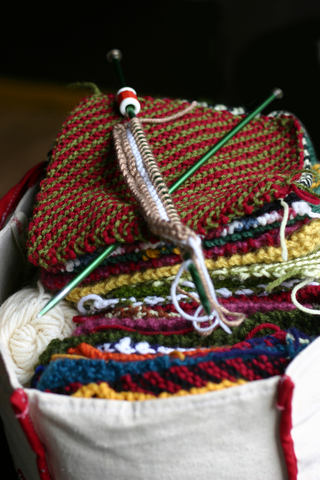 Felting is the art of binding natural fibers like wool into a dense, stiff fabric called felt by using friction. This can be done with water or a needle, depending on what look you’re going for, but the overall practice uses heat and friction to bind natural fabrics. If you’ve ever had a wool sweater that accidentally got put in the normal wash, you’ve seen first hand what felting can do. While it was probably really disappointing to part with that sweater, many knitters have found a way to use this same process to their advantage to create a whole new fabric. When practiced as an art form, though, the finished piece will be just the right size and remain useful, unlike that sweater.
Felting is the art of binding natural fibers like wool into a dense, stiff fabric called felt by using friction. This can be done with water or a needle, depending on what look you’re going for, but the overall practice uses heat and friction to bind natural fabrics. If you’ve ever had a wool sweater that accidentally got put in the normal wash, you’ve seen first hand what felting can do. While it was probably really disappointing to part with that sweater, many knitters have found a way to use this same process to their advantage to create a whole new fabric. When practiced as an art form, though, the finished piece will be just the right size and remain useful, unlike that sweater.
How to Felt Wool
In order to felt wool, you use heat and agitation. The most common way to create a usable item is by wet felting, in which you knit or crochet a piece rather loosely by using a larger hook or needles. If you’ve never done this before, it’s best to follow a pattern written specifically for the purpose of felting. If you don’t find a pattern, it is a good idea to knit a few swatches of different sizes and felt them the same way you will the final project to make sure you get the right size.
When looking for the yarn you want to use for your first felt piece, make sure you look for a fiber that is 100% wool, or other natural animal fiber. With the growing popularity of felting, many yarn manufacturers have started labeling their yarns as “feltable.” If you don’t see that, though, just make sure the yarn you choose is 100% animal fiber, and that it is not labeled as “super wash.”
Once you have knit your piece according to the pattern, you need to set your washing machine to the hottest temperature, lowest water level, and longest agitation. Most knitters experienced in felting will suggest that you put your piece in a zip-top pillowcase or tight mesh bag so that the fuzz doesn’t get in your washing machine. Wait until the machine starts agitating and drop your bundle into the water, setting your timer for 5 minutes. You’ll want to check your work every five to ten minutes until it’s done.
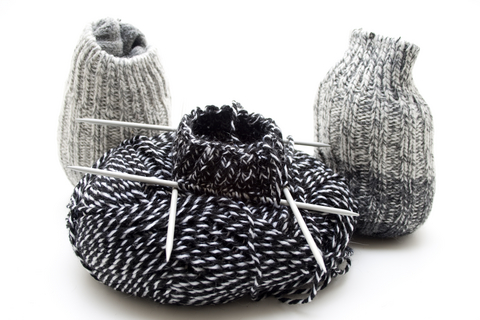
Every piece is different as to how long it takes to felt, so it’s really a personal preference. If you are following a pattern, pull your piece out to dry when the measurements match those of the pattern. If you are felting without a pattern, the piece is finished when it feels finished to you. There should no longer be any stitch definition, and the piece should be smooth and somewhat firm.
Once you’ve established that your piece is finished, rinse it with cool water and gently wring it out. You can then lay it to dry on a clean, thick towel. As it’s drying, gently pull and stretch it into shape and pin it so that it blocks correctly.
Benefits of Felting
While it’s no fun to discover that the sweater you spent hard-earned money on has felted in the wash, there are many benefits of felting intentionally, such as:
• Fabric becomes thicker and sturdier,
• Fabric can be exposed to the elements,
• Felt is very strong and resilient, and lasts much longer,
• Felt does not ravel or fray,
• Felt is fire resistant,
• Felt is highly absorbent.
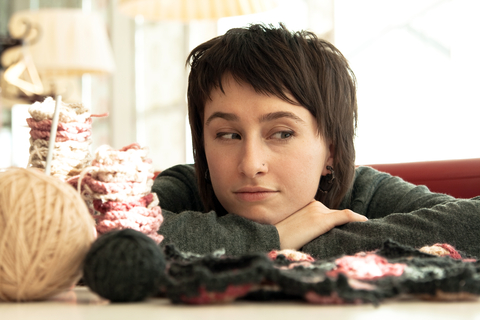
Felting has become very popular lately as knitters discover all of these benefits to creating felt. In addition to all of these benefits, once you’ve created a felted fabric, you can also easily cut and sew the fabric into different shapes, which you can’t do with regular knit fabric.
Once you make felt for the first time, you’ll probably be hooked. This process takes knitting an extra step and creates a new fabric with many more uses than standard knit fabric. If you’re looking for a way to knit fabric that can withstand seasonal weather and wear and tear, felting is a good art form to consider. With some wool or other natural fiber, a little water, and a lot of heat and friction, you can turn your regular knit piece into felt, which can withstand much more than knit fabric. Next time you find yourself looking for a new challenge, consider felting your next project to see how it turns out.

